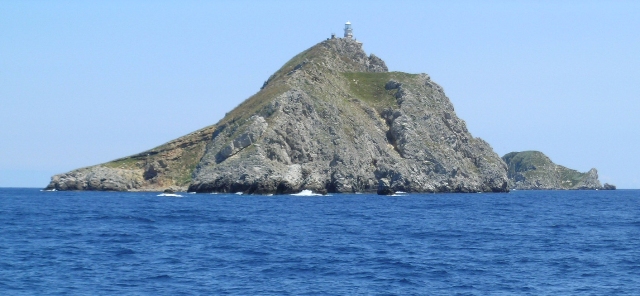Comparison between the Middle Miocene and the Upper Miocene source rock formations in the Sava Depression (Pannonian Basin, Croatia)
Main Article Content
Abstract
The Sava Depression lies at the very south-western margin of the Pannonian Basin. There are 20 hydrocarbon fields altogether and 17 are still in production. The organic geochemistry data and their statistical analysis from the 25 exploration wells, indicate source rock formations in two stratigraphic levels, an older one of Middle Miocene age (Badenian and Sarmatian) and a younger one of Upper Miocene age (Lower Pannonian). Both source rock formations are composed of marls, calcitic marls, clayey limestones and shales. Source rock intervals lay at depths from 1200 to 3362 m. The Total Organic Carbon (TOC) of analyzed samples varies from 0.39 to 4.94%, while their total generative hydrocarbon potential is from 2.40 to 37.40 mg HC/g rock. The mean thickness of the intervals is 100–150 m. There is a regular linear increase of the maturity level with depth. Source rocks are mature, in the catagenetic phase of transformation that enables hydrocarbon generation. A favourable organic facies, mostly kerogen type II, (organic facies AB and B), with good hydrocarbon potential, dominates the north-western and central part of the depression. It can be connected with the deeper parts of the depression and/or protected, anoxic to dysoxic stagnant environments with a gradual transition from marine (Badenian/Sarmatian) to brackish depositional environments (Lower Pannonian). In the south-eastern part of the depression, the dominant kerogen type is II–III, (organic facies BC), which indicates a stronger influx of terrestrial material from the uplifted parts that are generally closer to the margins of the depositional basin. The Fisher test (F-test) of the variance similarity (homogeneity), clearly indicates that the Badenian/Sarmatian samples belong to a statistically different population from the Lower Pannonian ones, due to their different depositional environments.
Downloads
Article Details
Authors have copyright and publishing rights on all published manuscripts.
References
BARIĆ, G. (1996): Organic Geochemistry in the Rationalization of Oil and Gas Exploration and Production.– Geol. Croat., 49/2, 191–195.
BARIĆ, G., IVKOVIĆ, Ž. & PERICA, R. (2000): The Miocene pet-roleum system of the Sava Depression, Croatia.– Petr. Geosci., 6, 165–173.
BARIĆ, G., TARI, V. & IVKOVIĆ, Ž. (2003): Petroleum systems in the southern part of the Pannonian Basin and in the Adriatic offshore, Croatia.– Nafta, 54/7–8, 299–307.
DEMAISON, G.J. & MOORE, G.T. (1980): Anoxic environments and oil source bed genesis.– Amer. Assoc. Petrol. Geol. Bull., 64, 1179–1209.
DEMAISON, G.J. (1991): Anoxia vs productivity: What controls the formation of organic-carbon-rich sediments and sedimetary rocks?– Amer. Assoc. Petrol. Geol. Bull., 61, 1950–1961.
ESPITALIE, J., DEROO, G. & MARQUIS, F. (1985): Rock Eval py-rolysis and its aplications.– Institut Francais du Petrole, Geologie no. 27299, Project B41 79008, Paris, 72 p.
HUNT, J.M. (1995): Petroleum Geochemistry and Geology.– W.H. Free-man and Company, San Francisco, 743 p.
JONES, R.W. (1987): Organic facies.– In: BROOKS, J. & WELTE, D. (eds.): Advances in Petroleum geochemistry 2. Academic Press, London, 1–90.
LUČIĆ, D., SAFTIĆ, B., KRIZMANIĆ, K., PRELOGOVIĆ, E., BRITVIĆ, V., MESIĆ, I. & TADEJ, J. (2001): The Neogene evolu-tion and hydrocarbon potential of the Pannonian Basin in Croatia.– Mar. Petr. Geol., 18, 133–147.
MATHUR, S.M. (1981): Cyclic sedimentation in the Vindhyan Super-grup.– Geological Survey of India, Records, 112, VIII, 1–6.
OŽEGOVIĆ, F. (1944): Prilog geologiji mlađeg tercijara na temelju podataka iz novijih bušotina u Hrvatskoj [Contribution to the Late Tertiary geology – data from the newest wells in Croatia – in Croatian].– Geol. vjesnik, 2–3, 391–491.
PUTNIKOVIĆ, A., BRITVIĆ, V., DRAGAŠ, M. & MAJSTOROVIĆ, J. (1989): Geološka interpretacija i usporedba geokemijskih poda-taka u svrhu sagledavanja međusobne povezanosti matičnih stijena i ugljikovodika u Panonskom bazenu [Geological interpretation and comparison of the geochemical data in a sense of source rock-hydrocarbon correlation, Pannonian Basin – in Croatian]. – DIT INA-Naftaplin, 26–27, 87–94.
RADIĆ, J., BRITVIĆ, V. & DRAGAŠ, M. (1989): Matične stijene pan-onskog bazena – Istražno područje INA-Naftaplin [Source rocks of the Pannonian Basin – Exploaration area of INA-Naftaplin – in Croatian].– DIT INA-Naftaplin, 26–27, 77–85.
SAFTIĆ, B., VELIĆ, J., SZTANÓ, O., JUHÁSZ, G. & IVKOVIĆ, Ž. (2003): Tertiary subsurface facies, source rocks and hydrocarbon reservoirs in the SW part of the Pannonian Basin (northern Croatia and south-western Hungary).– Geol. Croat., 56/1, 101–122.
SOFER, Z. (1980): Preparation of carbon dioxide for stable carbon iso-tope analysis of petroleum fractions.– Anal. Chem., 52, 1389–1391.
TAYLOR, G.H., TEICHMÜLLER, M., DAVIS, A., DIESSEL, C.F.K., LITTKE, R. & ROBERT, P. (1998): Organic Petrology.– Gebrüder Borntraeger, Berlin-Stuttgart, 704 p.
TYSON, R.V. (1995): Sedimentary organic matter – Organic facies and palynofacies.– Chapman & Hall, London-Gasgow-Winheim-New York-Tokyo-Melbourne-Madras, 615 p.
VELIĆ, J., WEISSER, M., SAFTIĆ, B., VRBANAC, B. & IVKOVIĆ, Ž. (2002):Petroleum-geological characteristics and exploration level of the three neogene depositional megacycles in the Croatian part of the Pannonian Basin.– Nafta, 53/6–7, 239–249.
VRBANAC, B. (2002): Contribution to the debate on the Stratigraphyc Classifi cation System and the importance of EK-markers in the Sa-va Depression.– Nafta, 53/1, 39–44.

